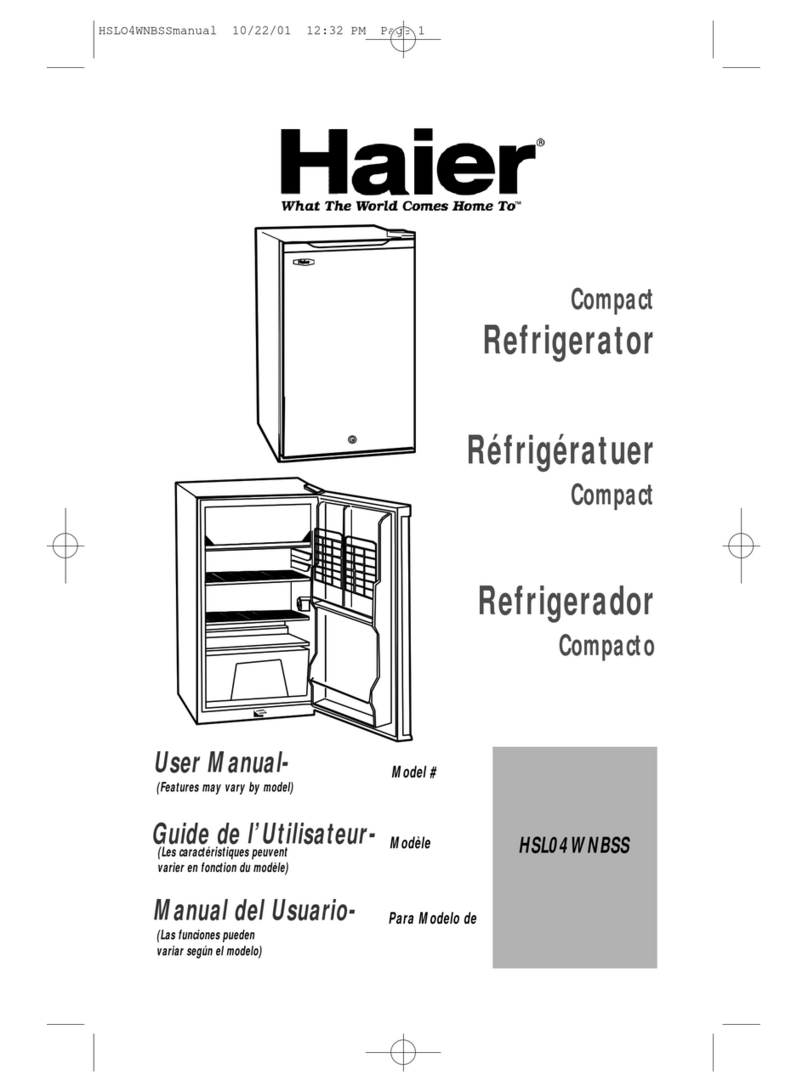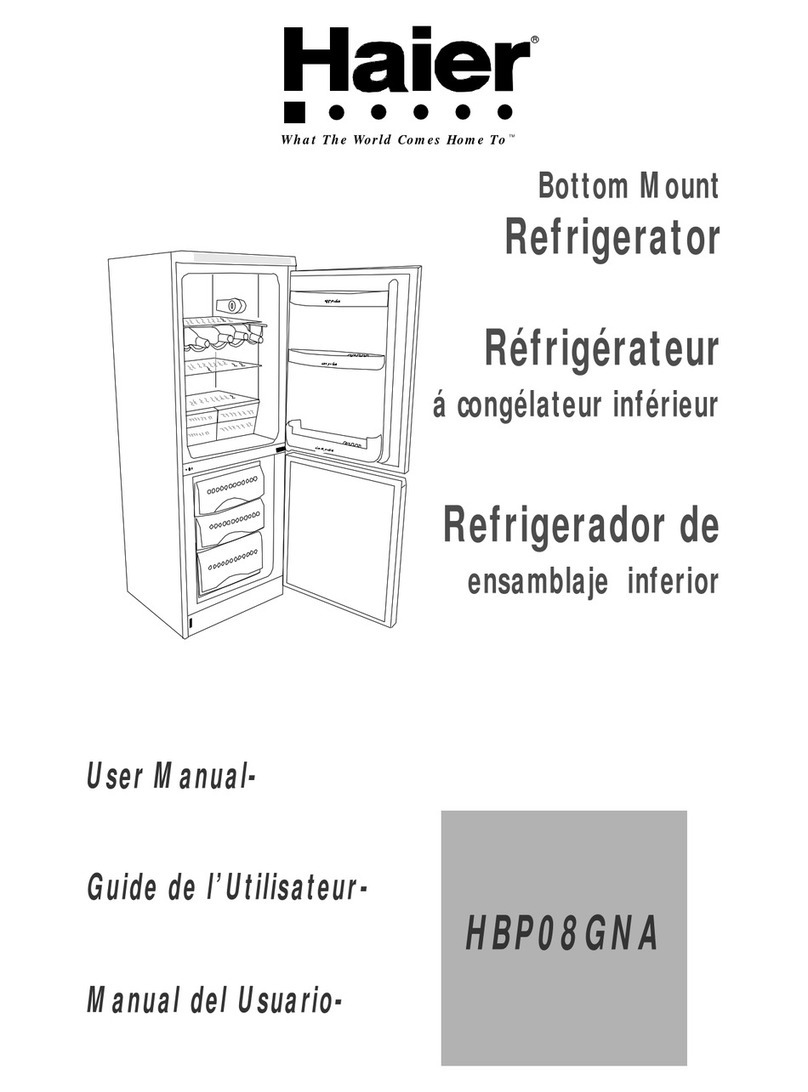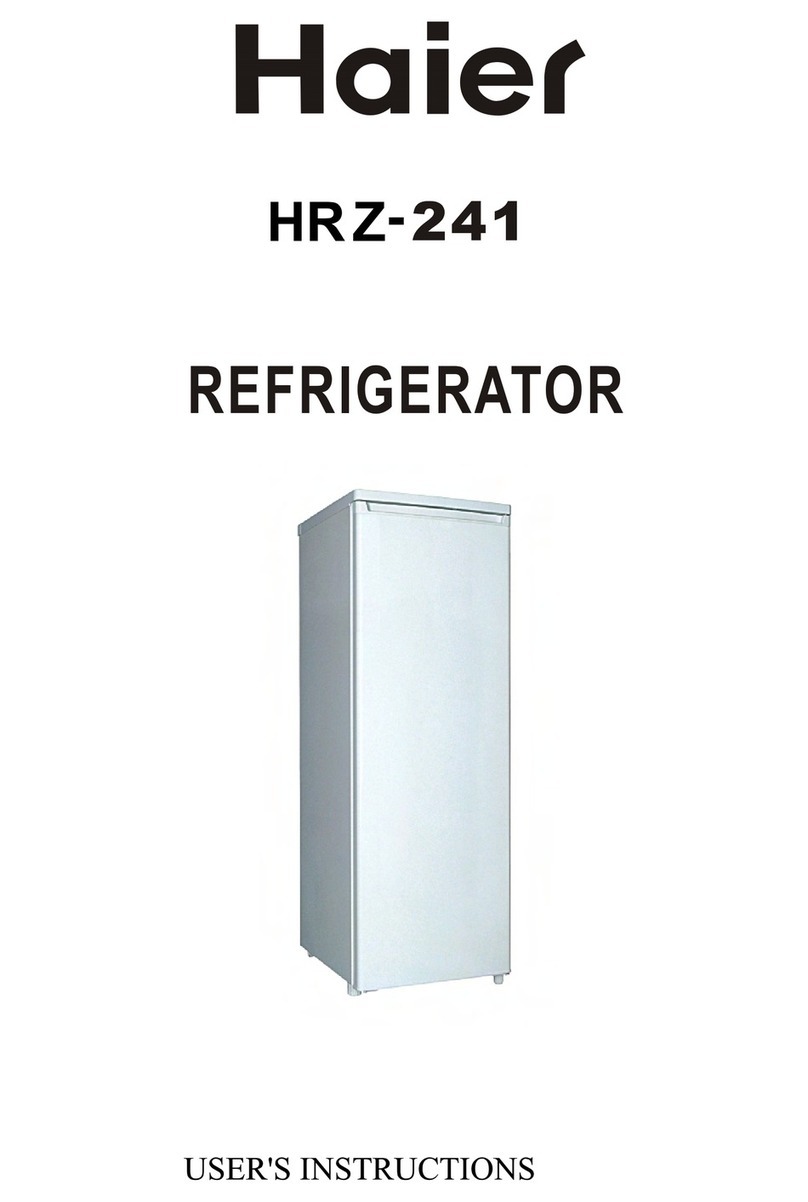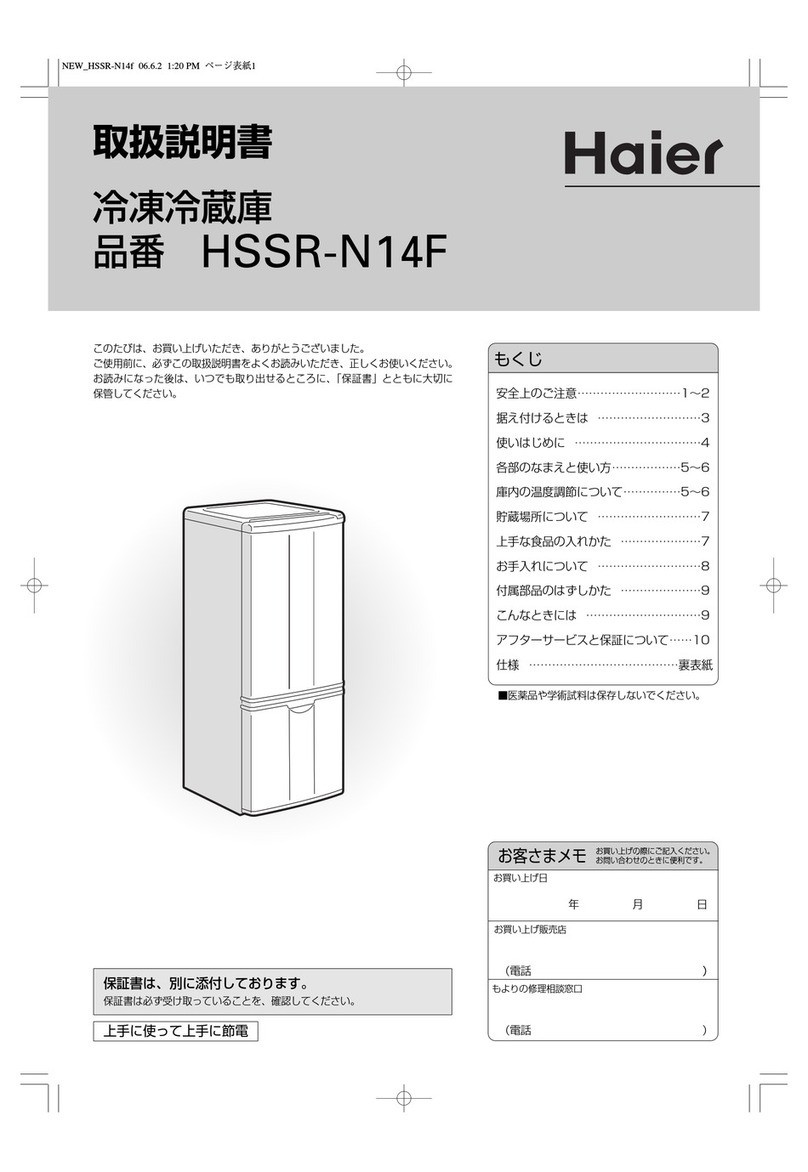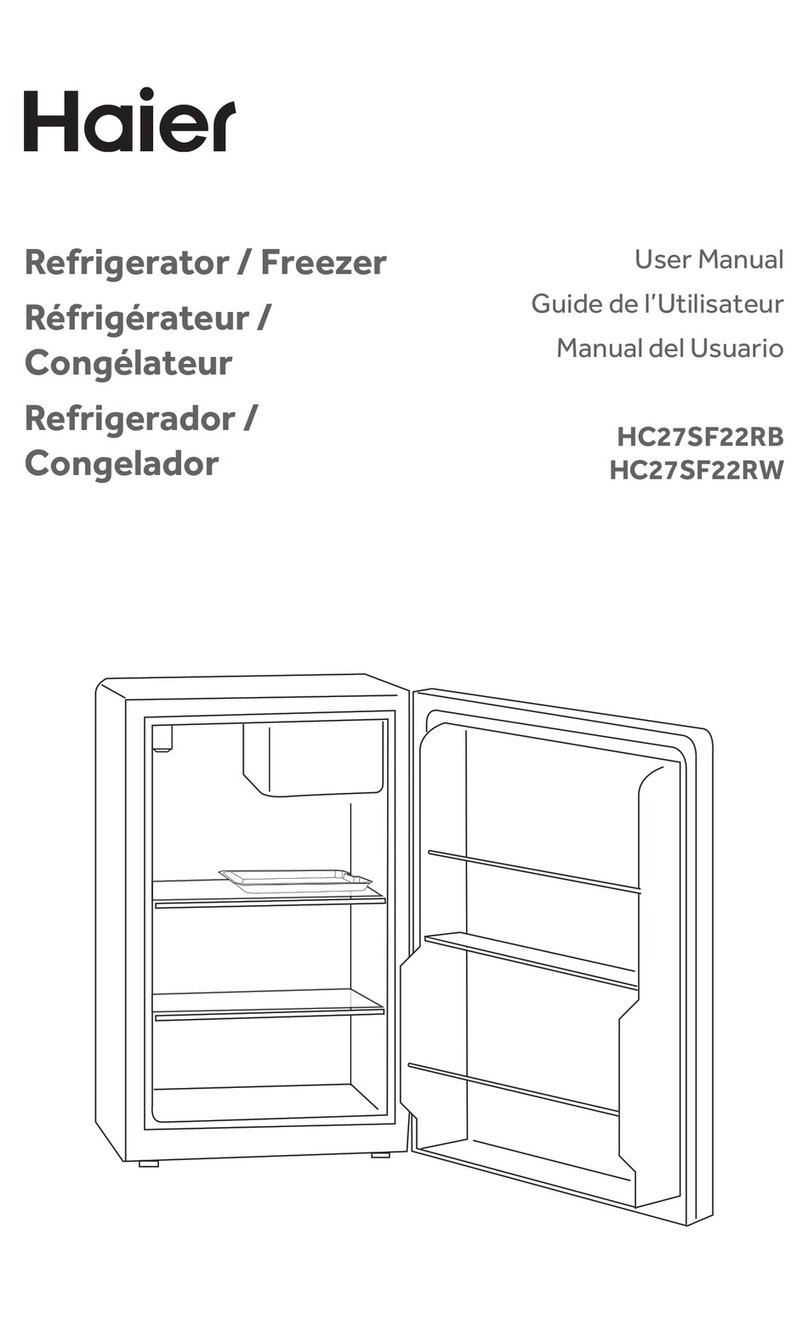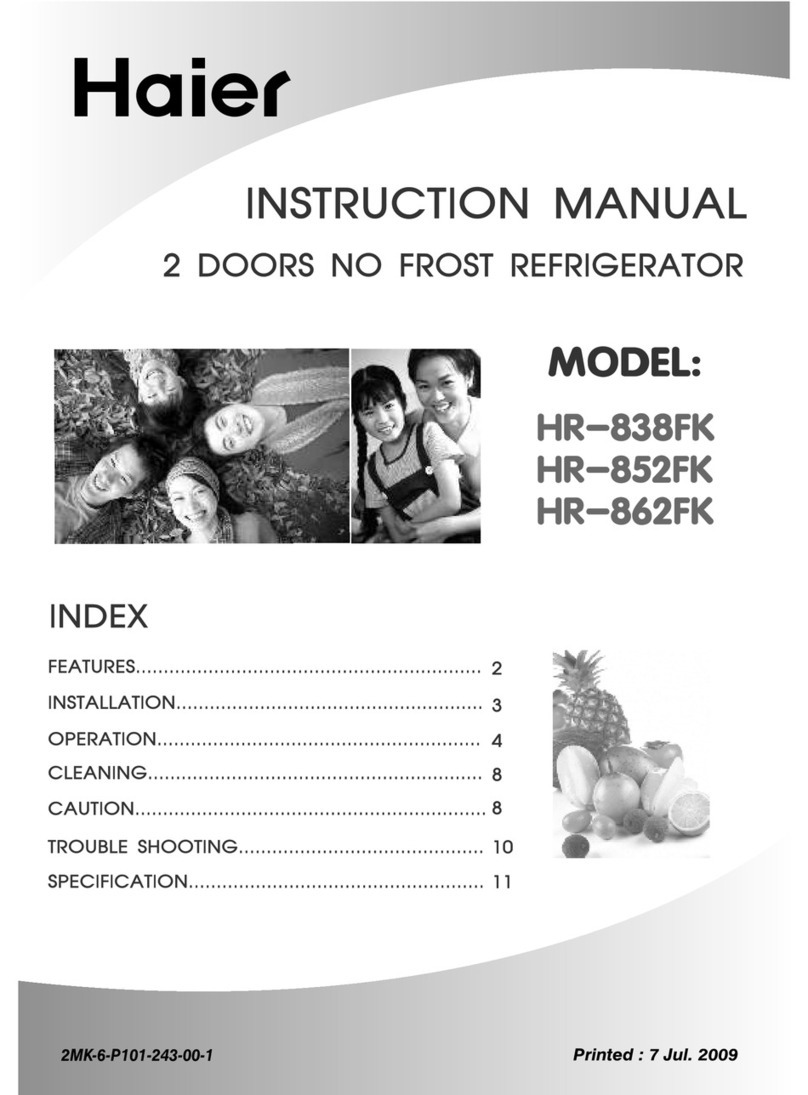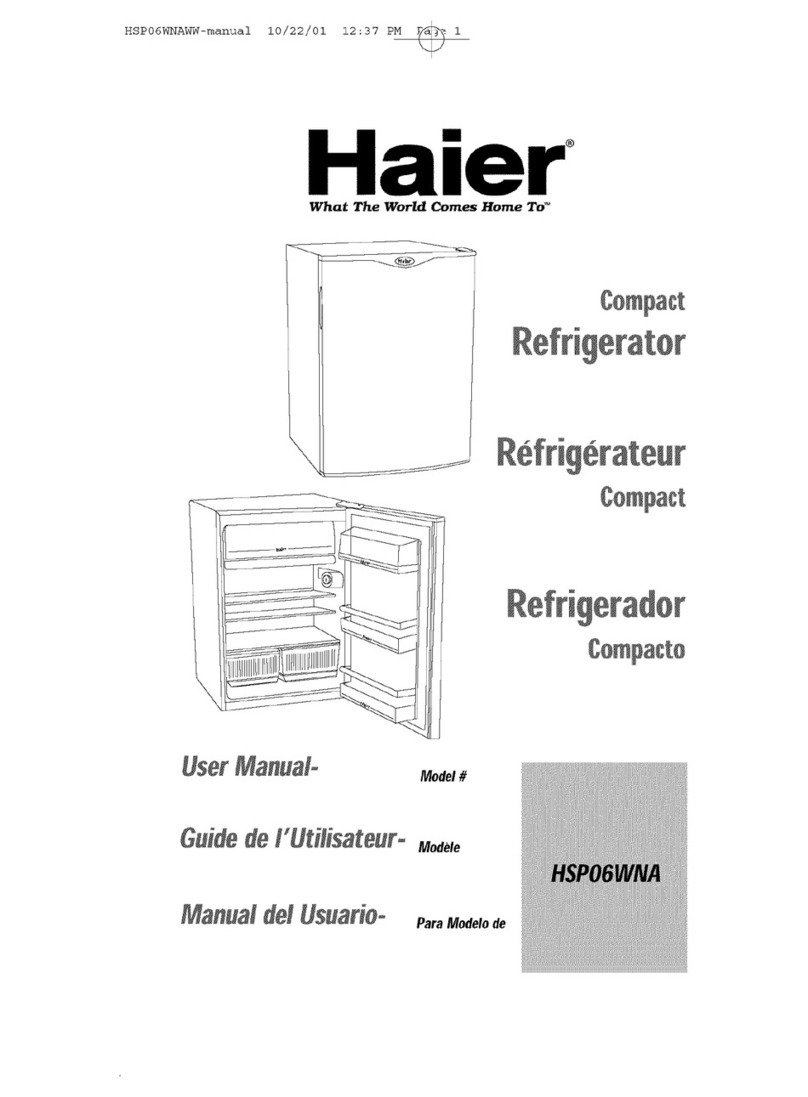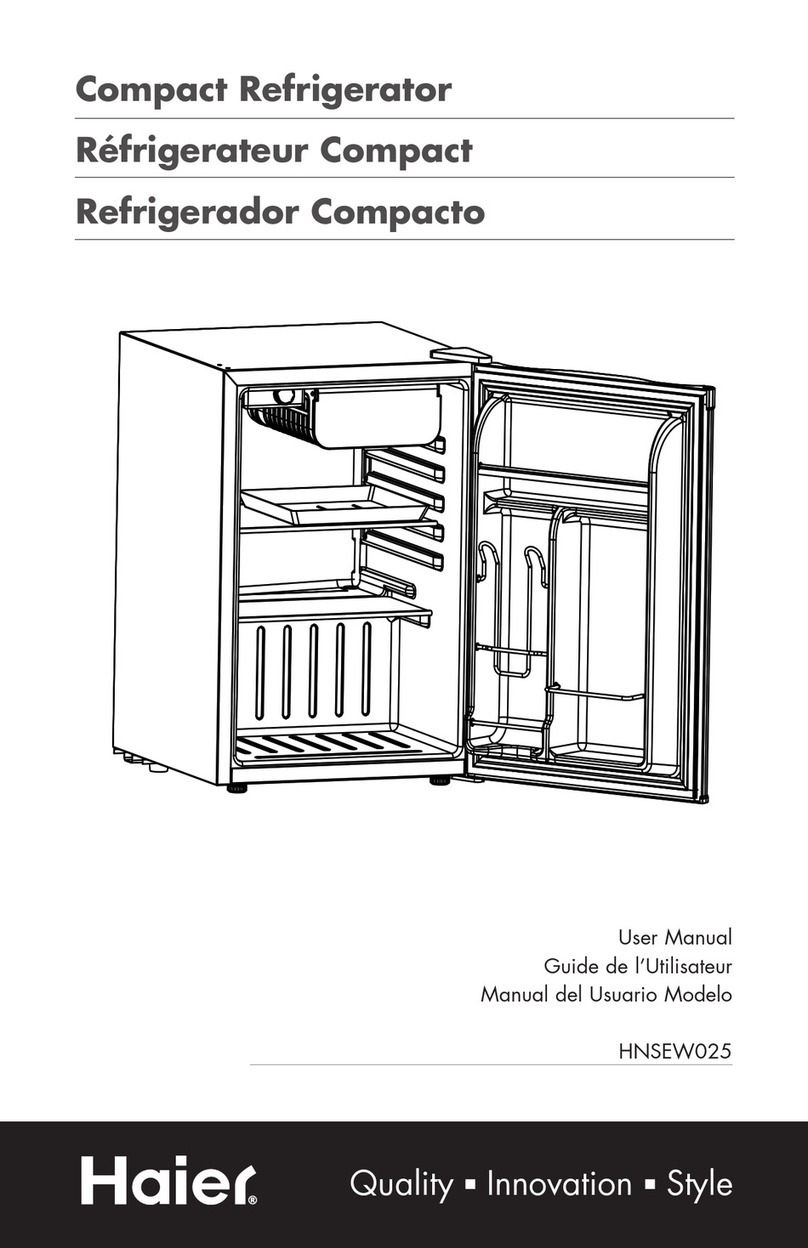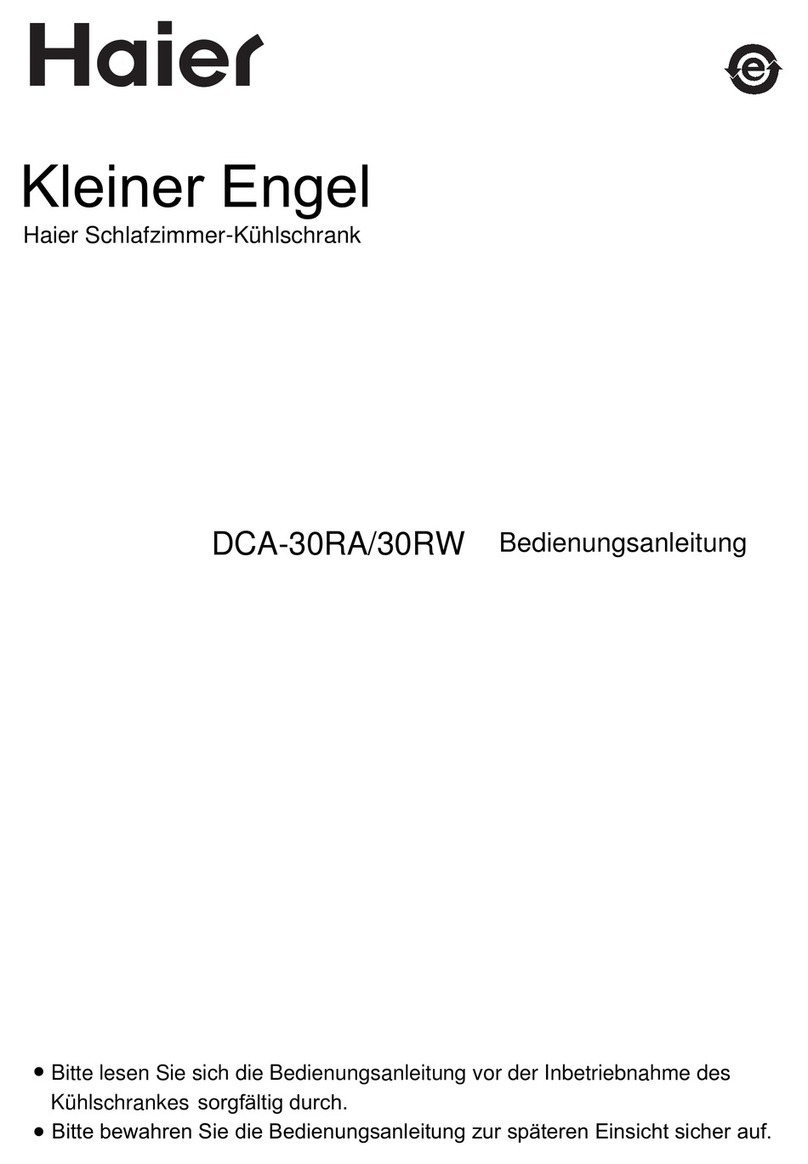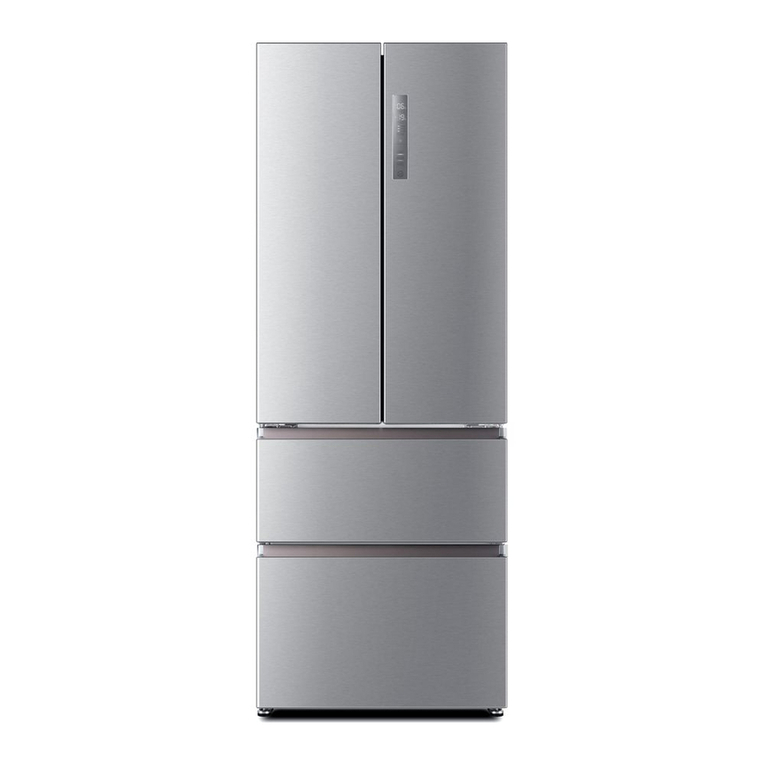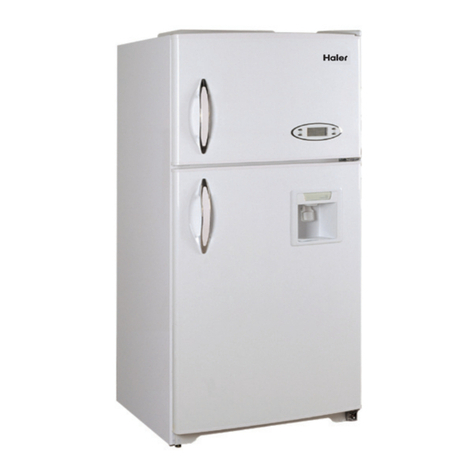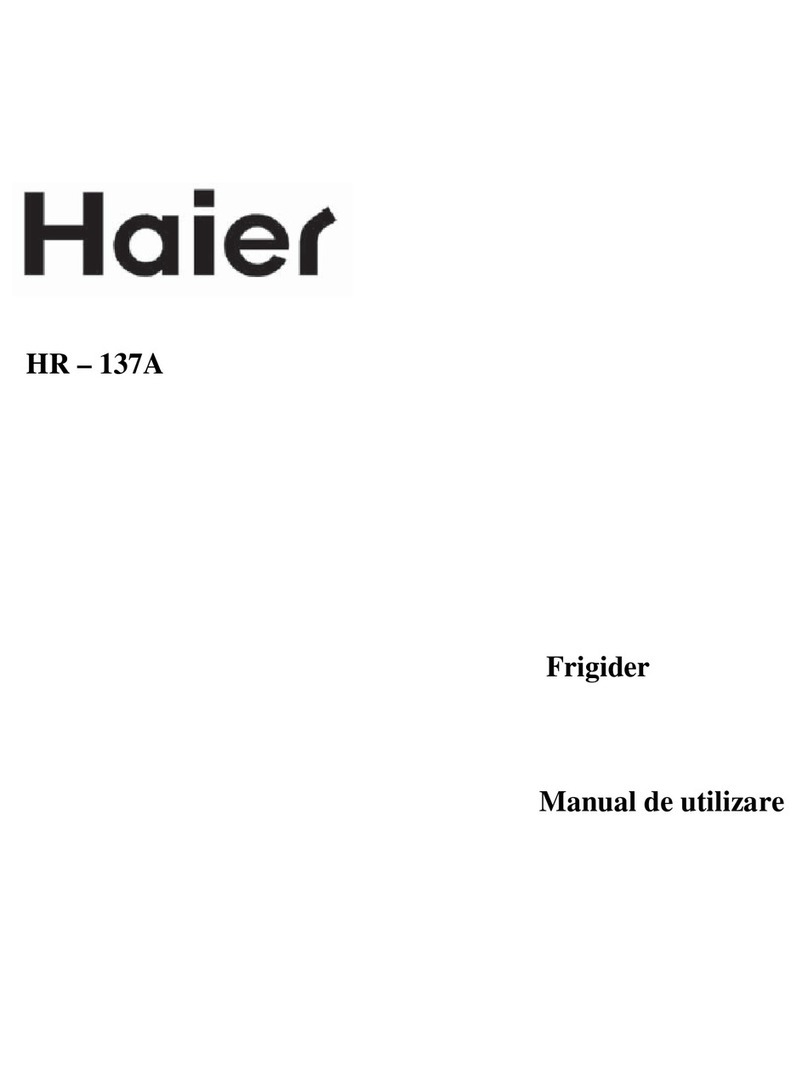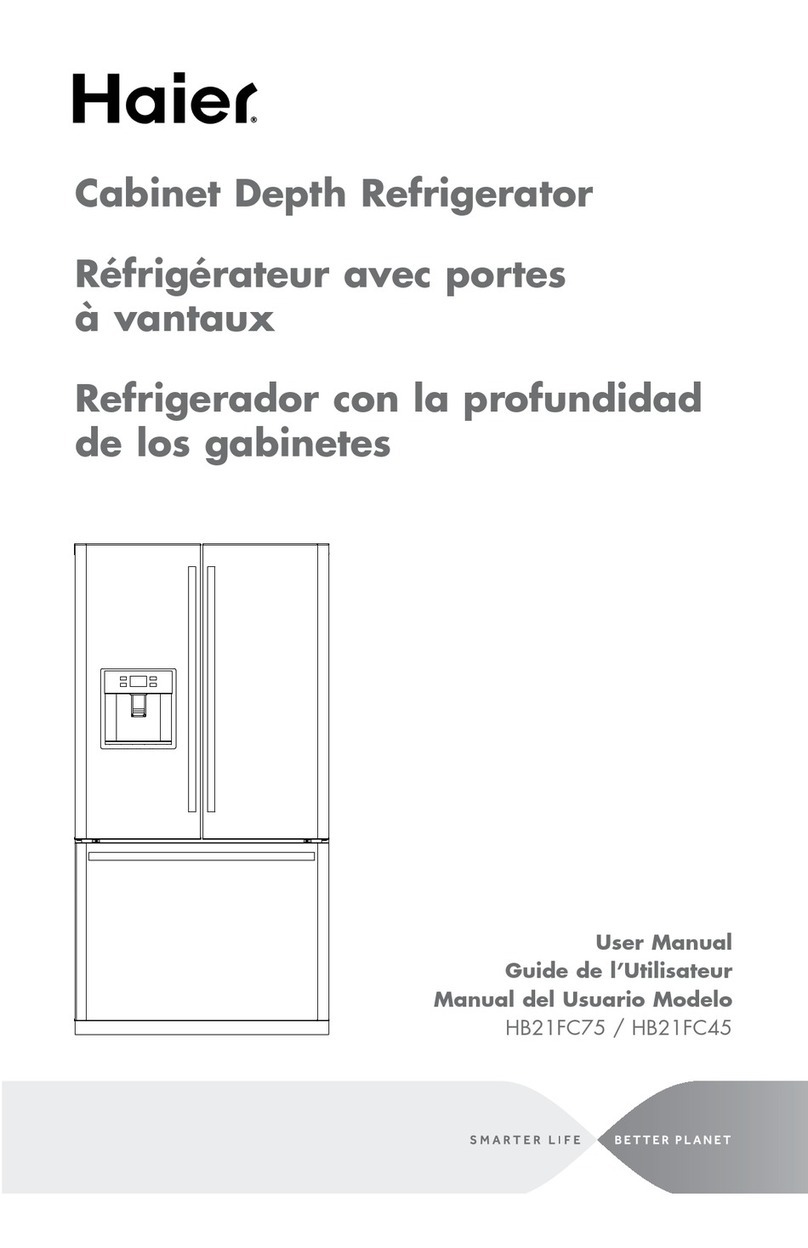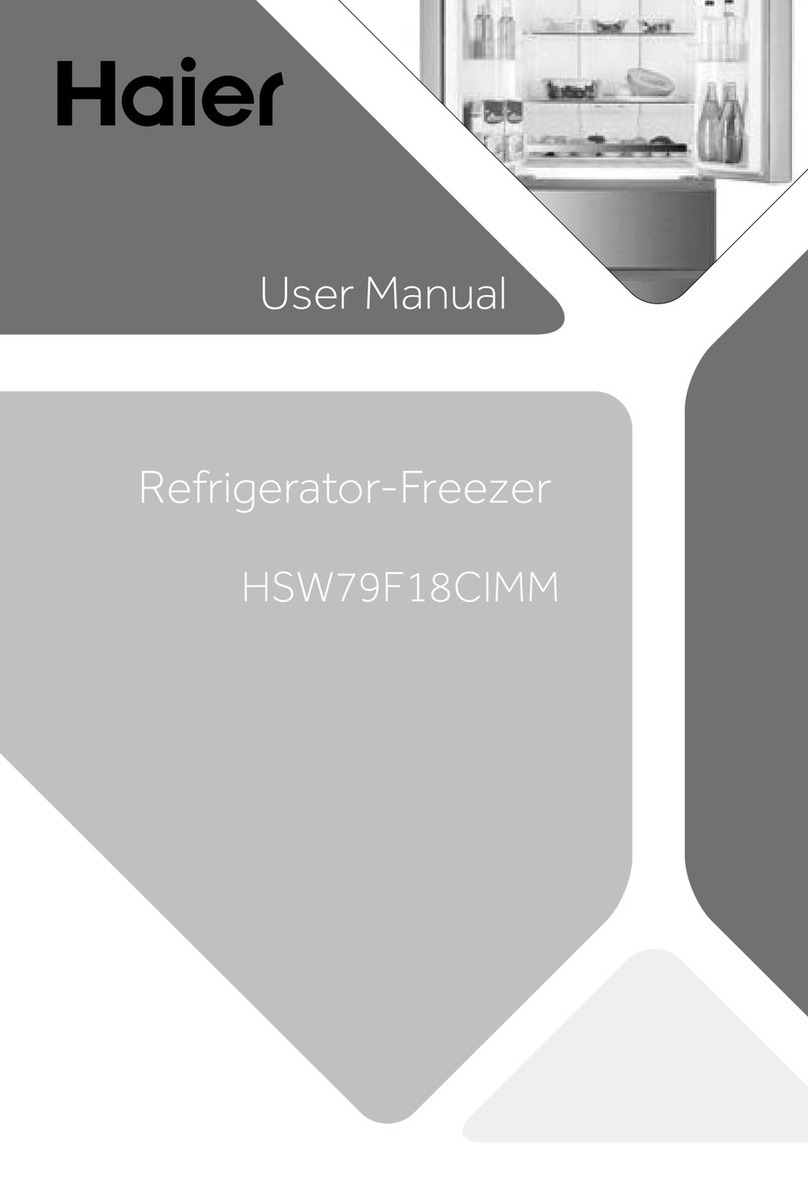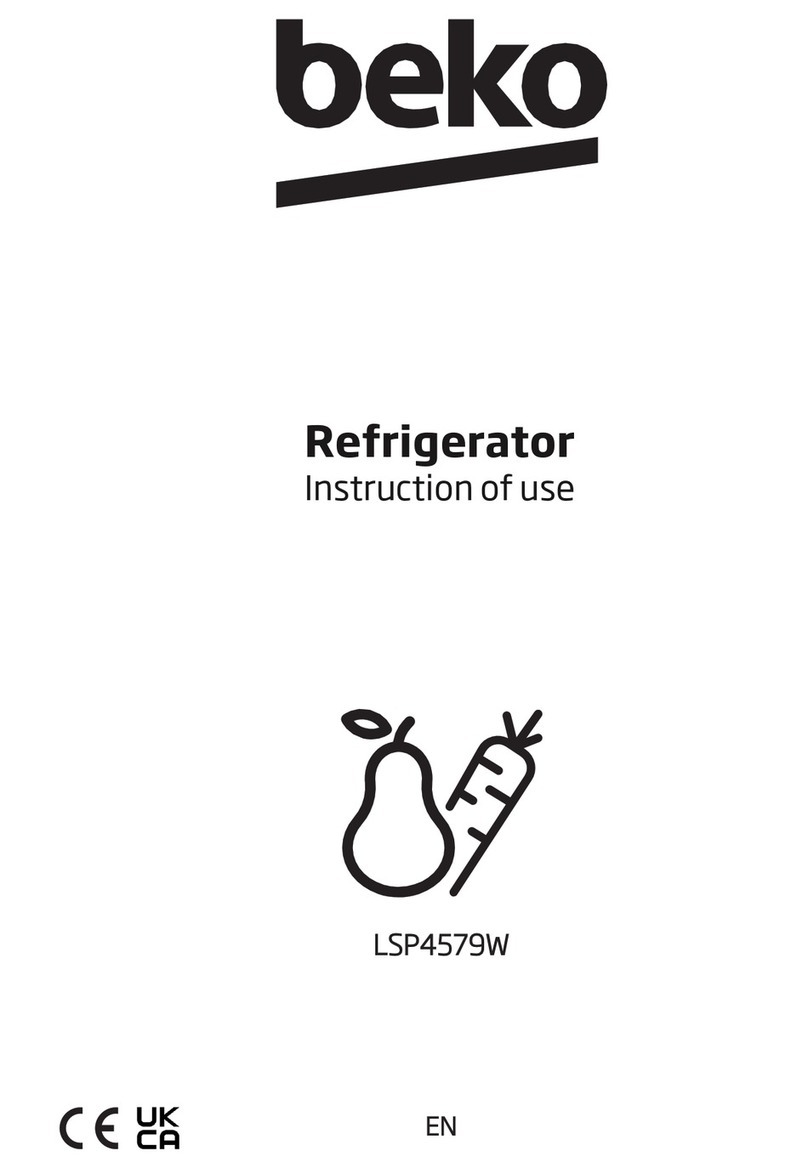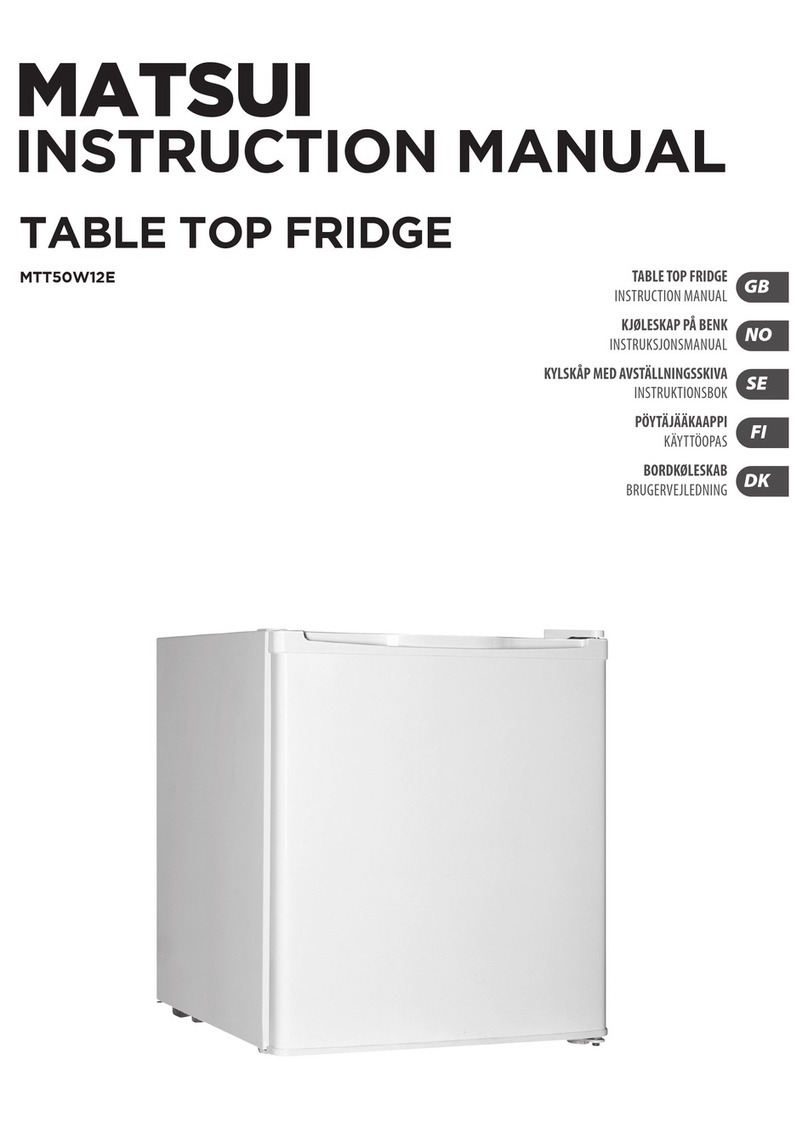English
1
IMPORTANT SAFETY
INSTRUCTIONS
Read all of the instructions before using this appliance. When using this
appliance, always exercise basic safety precautions, including the
following:
1. Use this appliance only for its intended purpose as described in this use
and care guide.
2. This refrigerator must be properly installed in accordance with the
installation instructions before it is used. See grounding instructions in
the installation section.
3. Never unplug your refrigerator by pulling on the power cord. Always
grasp the plug firmly and pull straight out from the outlet.
4. Repair or replace immediately, all electric service cords that have
become frayed or otherwise
damaged. Do not use a cord that shows cracks or abrasion damage
along its length, the plug or the connector end.
5. Unplug your refrigerator before cleaning or before making any repairs.
Note: If for any reason this product requires service, we strongly
recommend that a certified technician performs the service.
6. Do not use any electrical device or any sharp instrument in defrosting
your refrigerator.
7. If your old refrigerator is not being used, we recommend that you
remove the doors and leave the shelving in place. This will reduce the
possibility of danger to children.
8. After your refrigerator is in operation, do not touch the cold surfaces in
the freezer compartment,
particularly when hands are damp or wet. Skin may adhere to these
extremely cold surfaces.
9. Do not refreeze foods, which have been thawed completely. The United
States Department of Agriculture in Home and Garden Bulletin No. 69
reads: "…You may safely refreeze frozen foods that have thawed if they
still contain ice crystals or if they are still cold-below 40˚F".
"…Thawed ground meats, poultry, or fish that have any off-odor or
off-color should not be refrozen and should not be eaten. Thawed ice
cream should be discarded. If the odor or color of any food is poor or
questionable, discard it. The food may be dangerous to eat."
"…Even partial thawing and re-freezing reduce the eating quality of
foods, particularly fruits, vegetables, and prepared foods. The eating

